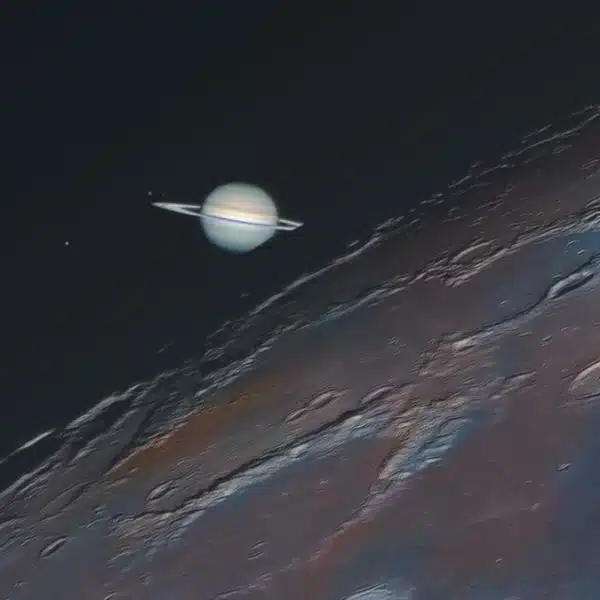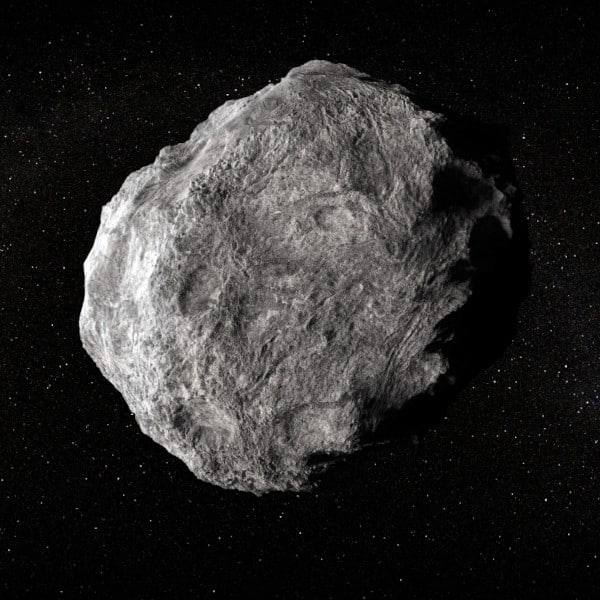
The Event Horizon Telescope's image of the black hole at the center of the M87 galaxy. This image shows the black hole's appearance in polarized light, the first time a magnetic field has been measured so close to a black hole. (Photo: EHT Collaboration)
Black holes are mysterious phenomena, but astronomers continue to take leaps and bounds towards a fuller understanding of these legendary celestial objects. In 2019, the Event Horizon Telescope (EHT) collaboration—a global network of radio telescopes—released the first image of a black hole. The photo of the supermassive black hole at the center of the Messier 87 (M87) galaxy was only visible by its central shadow, as light itself vanishes into it. Now, the newest released image builds on the initial photo to show the magnetic field at the edge of the black hole. It's a fascinating glimpse into the universe that was gained through observations of polarized light.
Like with polarized sunglasses, light passing through certain material is restricted in its movement so that its vibrations occur in a single plane. Researchers examining the light surrounding the black hole in M87 discovered the light was mostly polarized. Because light is an electromagnetic wave, it is dependent on both electric and magnetic fields. For the researchers, the polarized light around the black hole allowed them to effectively map the magnetic field at the edge of the celestial object as seen in the newly released image.
The photo offers additional information for scientists and researchers. Monika Mościbrodzka, Coordinator of the EHT Polarimetry Working Group explains, “We are now seeing the next crucial piece of evidence to understand how magnetic fields behave around black holes, and how activity in this very compact region of space can drive powerful jets that extend far beyond the galaxy.”
Echoing her sentiments is EHT collaboration member Andrew Chael. “The newly published polarized images,” he says, “are key to understanding how the magnetic field allows the black hole to ‘eat' matter and launch powerful jets.” These jets of energy and matter escape the black hole and project out into the galaxy and beyond. They, like black holes, remain an object of curious investigation by astronomers around the world.
In 2019, the Event Horizon Telescope collaboration—a global network of radio telescopes—released the first image of a black hole.
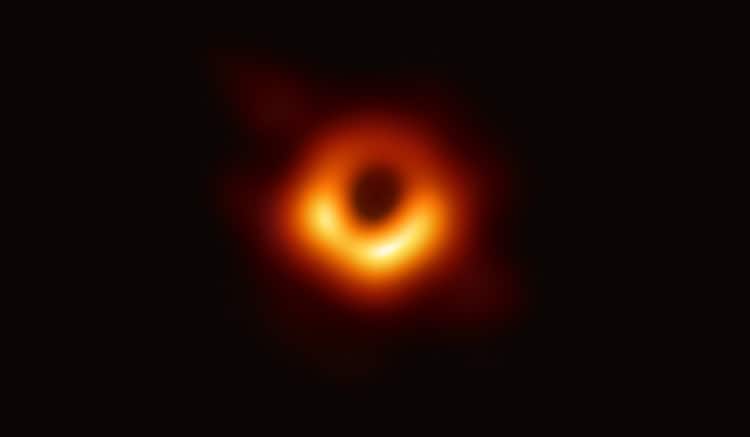
The first image of a black hole, captured by EHT. This supermassive black hole in the centre of Messier 87 is seen by its shadow, the closest we can come to an image of the black hole itself. (Photo: EHT Collaboration)
A new image has added a visualization of the magnetic field surrounding the black hole, based on observations of polarized light.
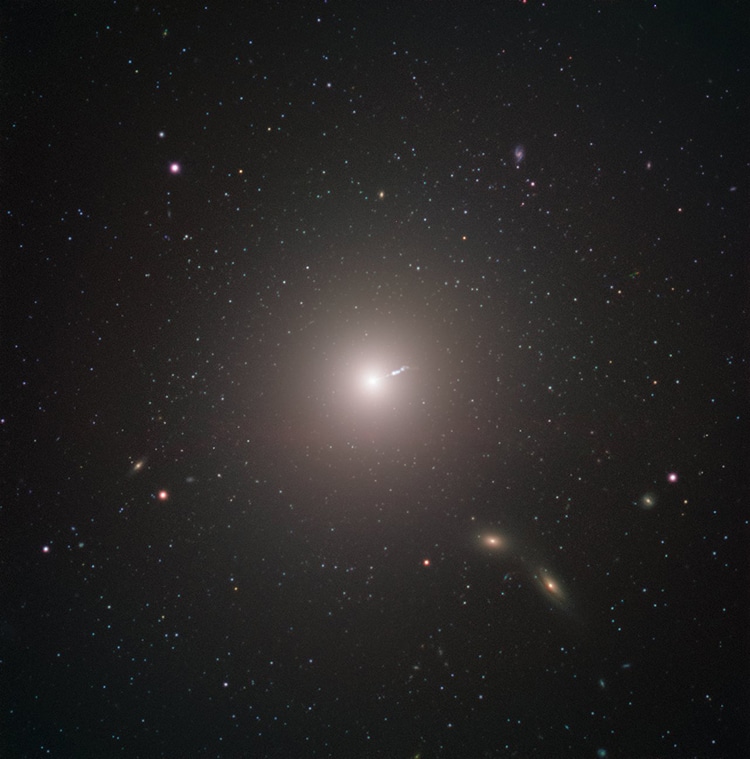
The Messier 87 galaxy, at the center of which is a black hole. (Photo: ESO)
Created by a global network of radio telescopes, the image is another step towards understanding mysterious black holes.
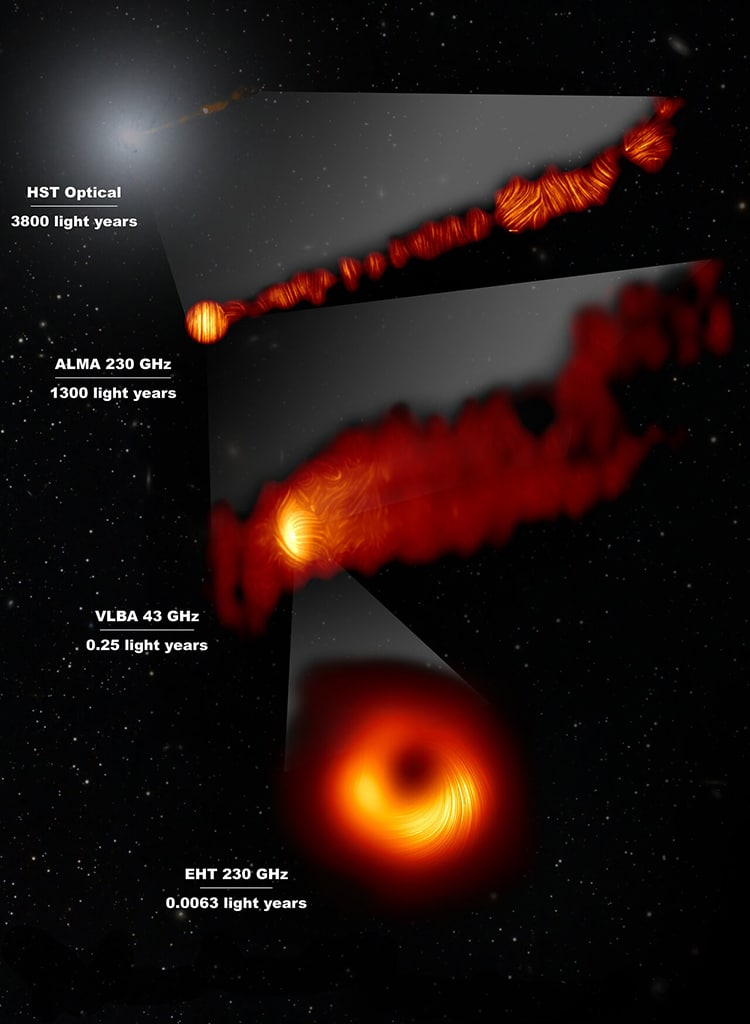
Composite image showing three views of the central region of the Messier 87 galaxy in polarized light and one view, in the visible wavelength, taken with the Hubble Space Telescope. (Photo: EHT Collaboration; ALMA (ESO/NAOJ/NRAO), Goddi et al.; NASA, ESA and the Hubble Heritage Team (STScI/AURA); VLBA (NRAO), Kravchenko et al.; J. C. Algaba, I. Martí-Vidal)
Discover the center of the M87 galaxy, where there exists a supermassive black hole.
h/t: [IFL Science]
Related Articles:
NASA Releases 30 New Space Images for 30th Anniversary of the Hubble Telescope’s Launch
Meet the Harvard Computers, the Undervalued Women Who Mapped 400,000 Stars
Explore Sounds and Images From Mars Sent Home From NASA’s Perseverance Rover
Astrophotographer Captures Extraordinary Details of Moon’s Surface in 209-Megapixel Photo

















































































